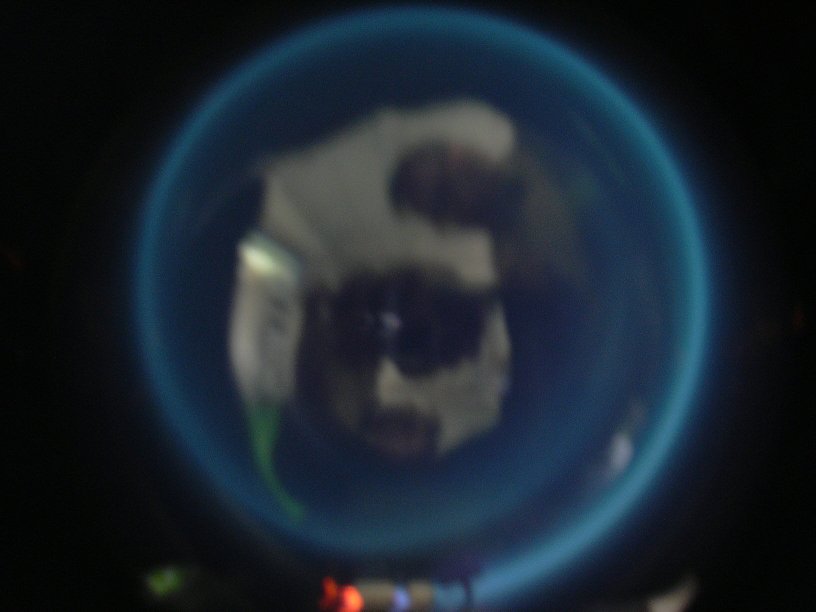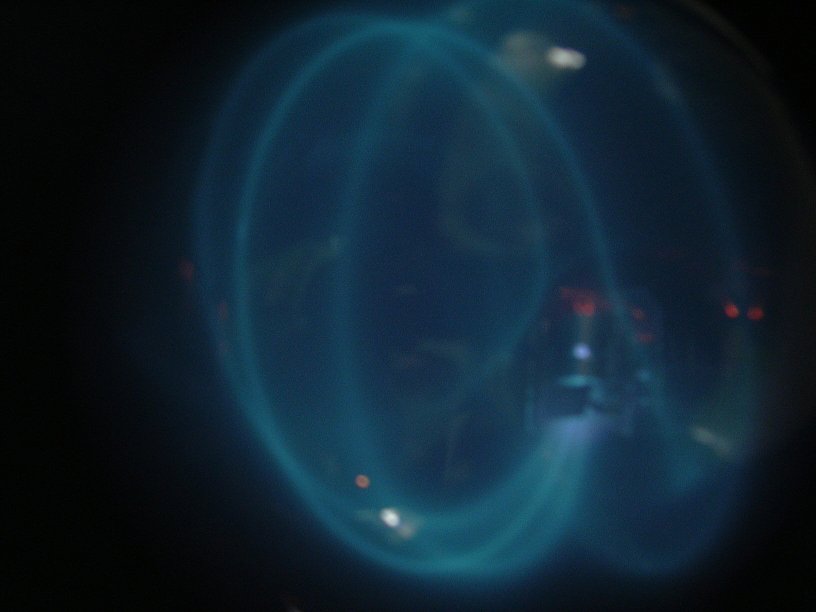 |
 |
 |
Have you ever see cathode rays? And what kind of computer monitor are you watching now?
The story of cathode rays started with a scientist, Faraday, who wanted to check if the electrical current can flow through gases, but a decisive contribution came from two enterprisers: a glass blower and an electrician.
The electrical current in gases at atmospheric pressure forms a spark, but at lower pressures makes a filament, then broadening into the whole tube at about 1mm Hg pressure (or 1 Torr, the atmospheric pressure is 760 Torr in these units). At much lower pressures (0.001 mm Hg) the bight glow disappears and only a faint fluorescence is visible.
At pressures of tens of Torr a filament-like discharge starts. At pressures of about 1 Torr it expands to the whole tube, with further lowering the pressure it develops standing striations and then the bright glow disappears.
In 1855 Geissler constructed a new pump, using falling mercury droplets, based on Torricelli idea - of vacuum above the column of mercury. This allowed him to pump down glass tubes to very low pressures.
At about the same time H. D. Ruhmkorff, a German inventor living in Paris, made substantial changes to Faraday's induction coil, what enabled to make sparks 30 cm long in air. In 1864 he was even awarded by Napoleon III.
Many research contributed to the discovery of electron, and their present use in TV lamps, electron microscopes, cancer treatment etc.
The discovery of cathode rays and of the electron had also some dead-end
paths:
o Heinrich Hertz in 1883 showed (incorrectly) that cathode rays were not deflected by electrical fields what would suggest that they were not charged particles. However, his persistence in experiments with electrical sparks made possible radio (and TV, microwave ovens, cell phones etc.)
Learn more from:
Prof. Michael Fowler, University of Virginia, "Rays and Particles" set of concise and vivid-language lesson on
Modern Physics
http://galileo.phys.virginia.edu/classes/252/rays_and_particles.html
The proton, Carl E. Moore, Bruno Jaselskis, Alfred von Smolinki
Journal of Chemical Education, Vol. 62. No.10, p. 859
http://dbhs.wvusd.k12.ca.us/webdocs/AtomicStructure/Proton.pdf
William Crookes tubes from London Science Museum
http://www.sciencemuseum.org.uk/on-line/electron/section5/crosstube.asp
A nice private collectioner web-site, all dedicated to Geisler tubes
http://members.chello.nl/~h.dijkstra19/page7.html
Pages dedicated to biographies, no only of well-known scientists, made by a scientist
http://chem.ch.huji.ac.il/~eugeniik/history/geissler.html
http://chem.ch.huji.ac.il/~eugeniik/history/ruhmkorff.htm
Precise and complete description of cathode rays and related subjects made by students of École Dr. E.P. Scarlett, Calgary
http://schools.cbe.ab.ca/b858/dept/sci/teacher/zubot/Phys30notes/investnurays/investnurays.htm
A detailed description of JJ Thompson discoveries and related field (only for subscribers)
J. J. Thomson - the Centenary of His Discovery of the Electron and of His Invention of Mass Spectrometry, Iwan W. Griffiths, Rapid Communications in Mass Spectrometry, Volume 11, Issue 1, Pages 2 - 16
http://www3.interscience.wiley.com/cgi-bin/abstract/12735/ABSTRACT?CRETRY=1&SRETRY=0
A nice film showing magnetic deflection of cathode rays
The University of Illinois at Urbana-Champaign
CHEMISTRY LEARNING CENTER
http://www.chem.uiuc.edu/clcwebsite/cathode.html
How Geissler mercury pump worked
http://www.signweb.com/index.php/channel/14/id/1733